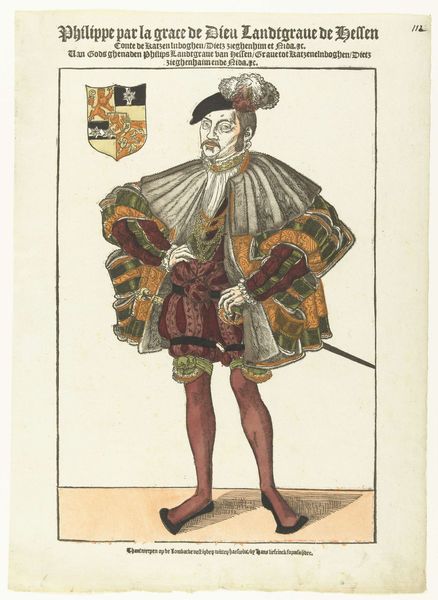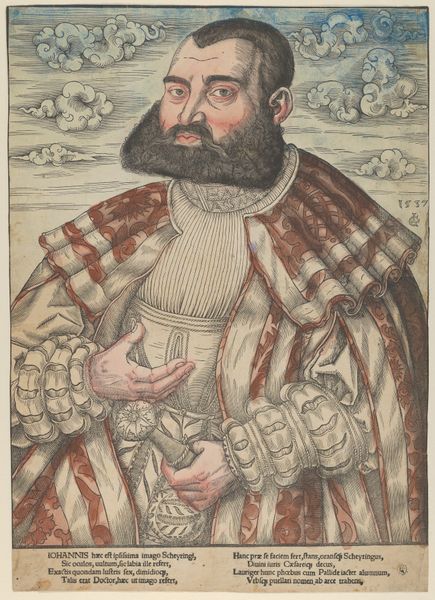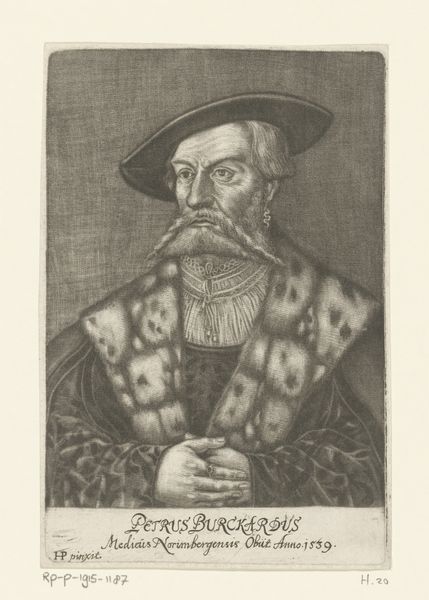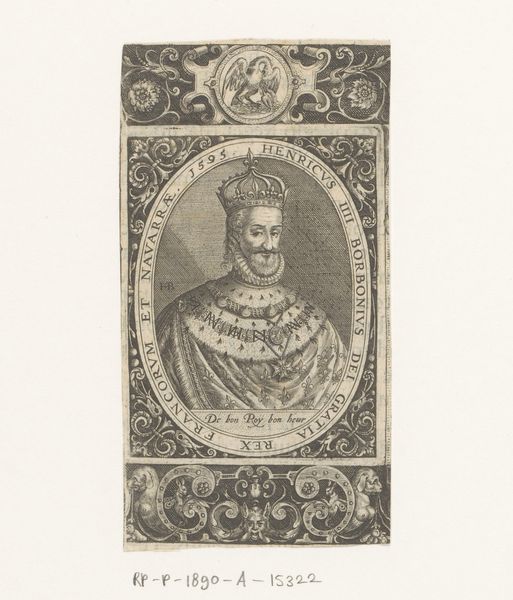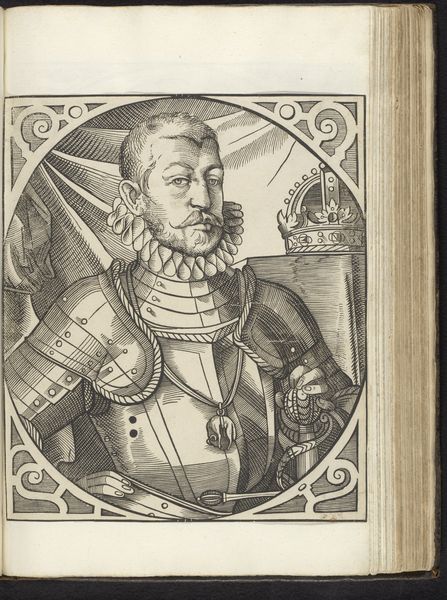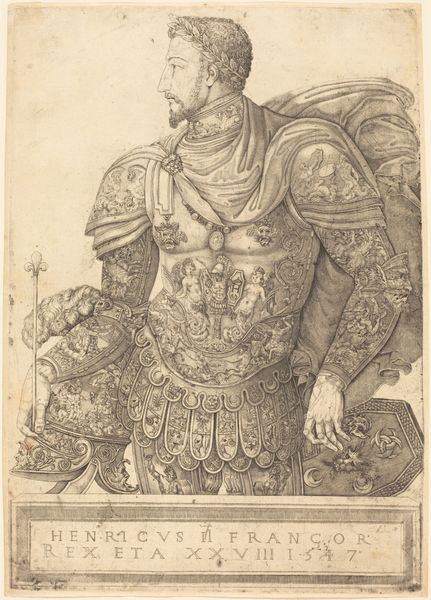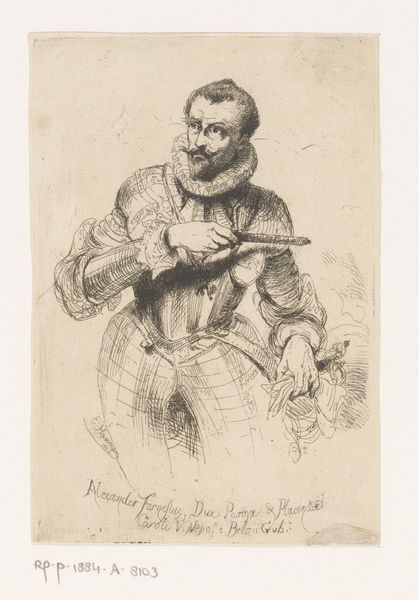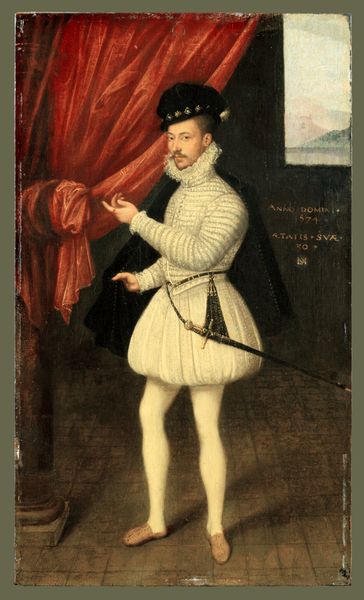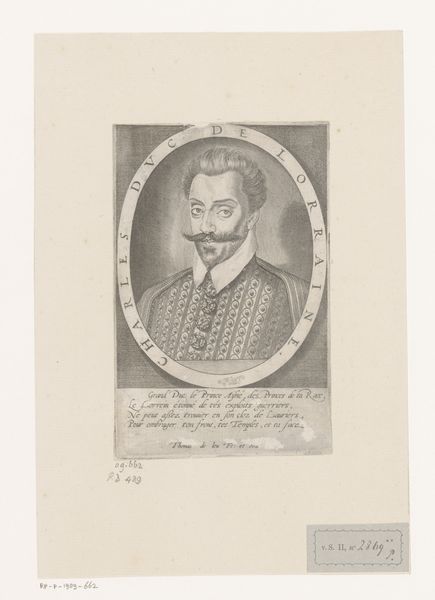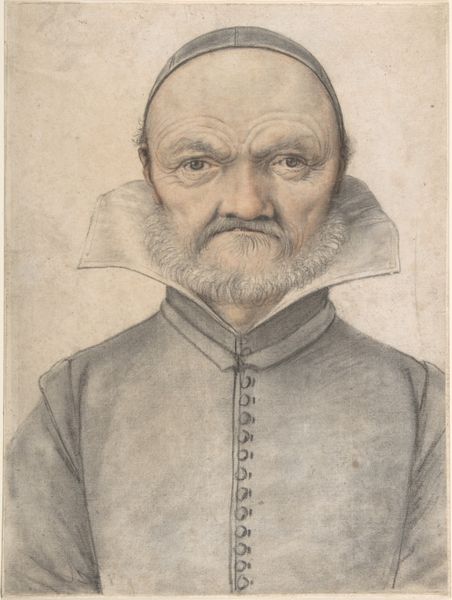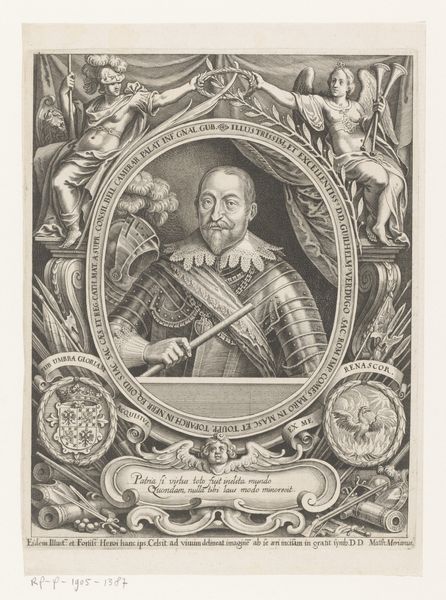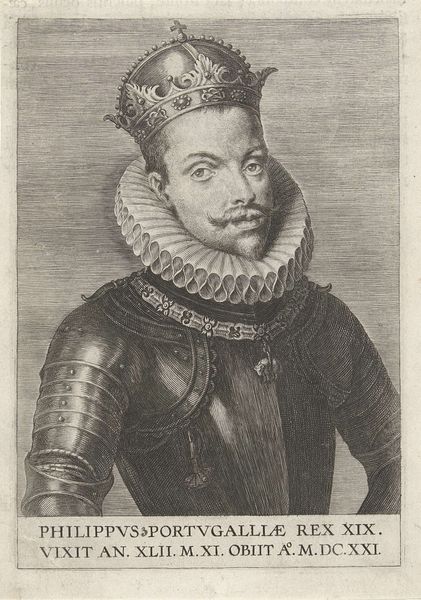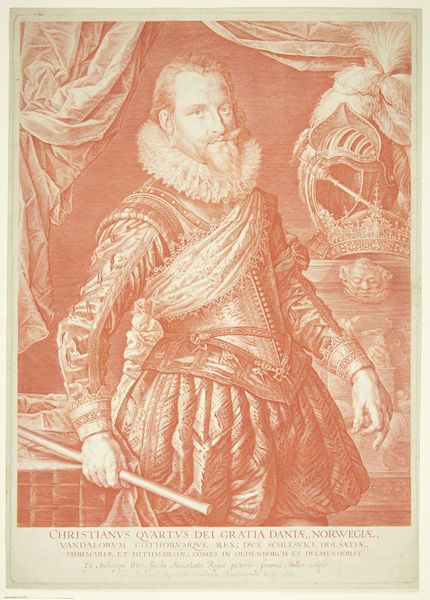
sculpture, wood
#
portrait
#
baroque
#
dutch-golden-age
#
sculpture
#
sculpture
#
wood
Dimensions: height 80 cm, width 38 cm, depth 34 cm
Copyright: Rijks Museum: Open Domain
Curator: Good morning, everyone, and welcome. Before us stands a carved wooden bust dating from 1636, portraying the famed Dutch admiral Piet Heyn. It's attributed to Hendrick de Keyser the Younger. My initial impression? Intense. Editor: He looks like he's seen a thing or two, hasn’t he? It is fascinating how a portrait bust—essentially, a fragment—can evoke so much about the whole person. What strikes you most symbolically? Curator: Definitely the carved dragon embellishments on the base. Dragons were associated with treasure and power. Presenting Piet Heyn upon that motif hints, perhaps subtly, at his conquests in seizing Spanish treasure fleets. Remember, his capture of the Spanish silver fleet in 1628 was a major victory. Editor: Absolutely. Those details are no accidents. They reveal how Heyn was being publicly crafted as a hero, a symbol of Dutch maritime dominance. This wasn’t just about commemorating a man; it was about promoting a national narrative. Consider the setting this would have originally occupied. A public space, perhaps? A merchant's hall? Curator: Precisely! And it tells a compelling story about power and wealth at that time. This wasn’t just about skill or bravery, but the economic benefits derived from it. His features… the intense stare, that determined set of his mouth framed by the distinctive moustache and goatee… Editor: The goatee reminds one of strength. But those details would have transmitted meanings accessible to its viewers in the moment of its unveiling, beyond just individual features. How was he seen within Dutch society at the time, particularly from a public memory standpoint? Curator: The choice of wood too – not marble or bronze – hints at accessibility, a connection to the merchant class who largely financed the Dutch Golden Age and fueled their dominance. There's a raw energy to the piece. And his stern expression embodies the values those merchants saw in themselves: determination, resilience and resolve. It reinforces Heyn as an archetypal representation. Editor: Indeed, and it all builds to convey a specific message about Dutch identity at the height of its power. That narrative needed figures and icons like Piet Hein to embody and reinforce the ideals and aspirations. What better way to achieve it than through durable symbols? Thank you. Curator: And thank you for reminding us that objects are rarely about a single truth but reveal evolving perceptions and complex motivations across time.
Comments
rijksmuseum almost 2 years ago
⋮
Piet Heyn became a seaman at a young age. When he was fifteen years old, he was taken prisoner by the Spanish and made to serve two years as a galley slave. After his release, Heyn pursued a career in the merchant marine: he held high-ranking positions in the Dutch West India Company. In 1628 he captured a Spanish treasure fleet (known as the ‘Silver Fleet’) off the coast of Cuba. A year later he perished at sea.
Join the conversation
Join millions of artists and users on Artera today and experience the ultimate creative platform.

